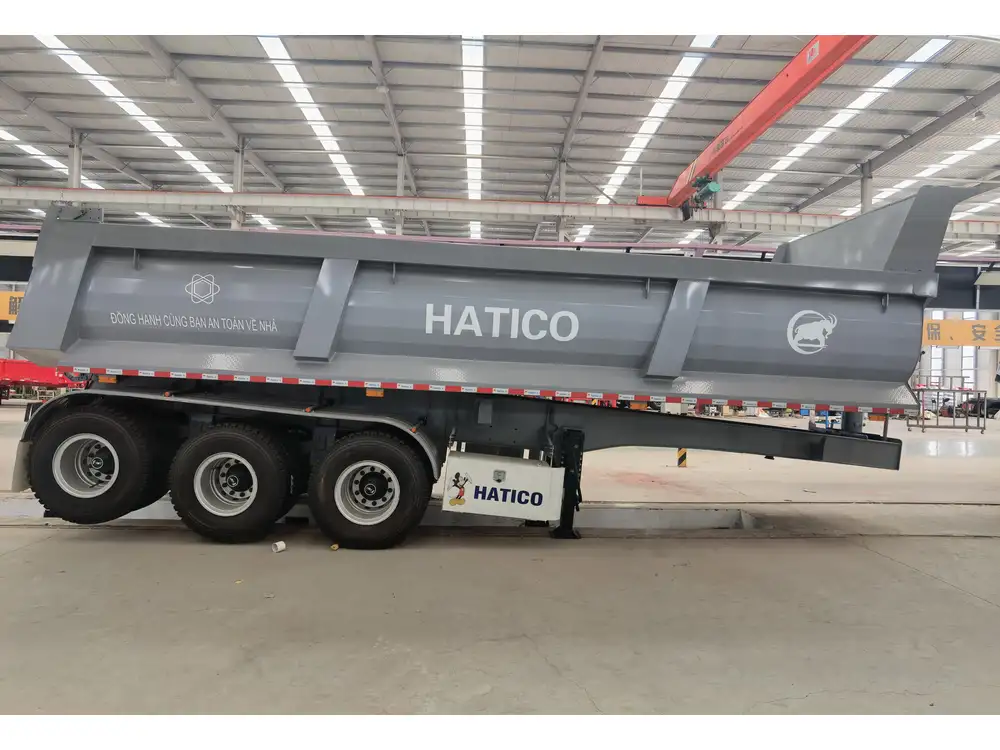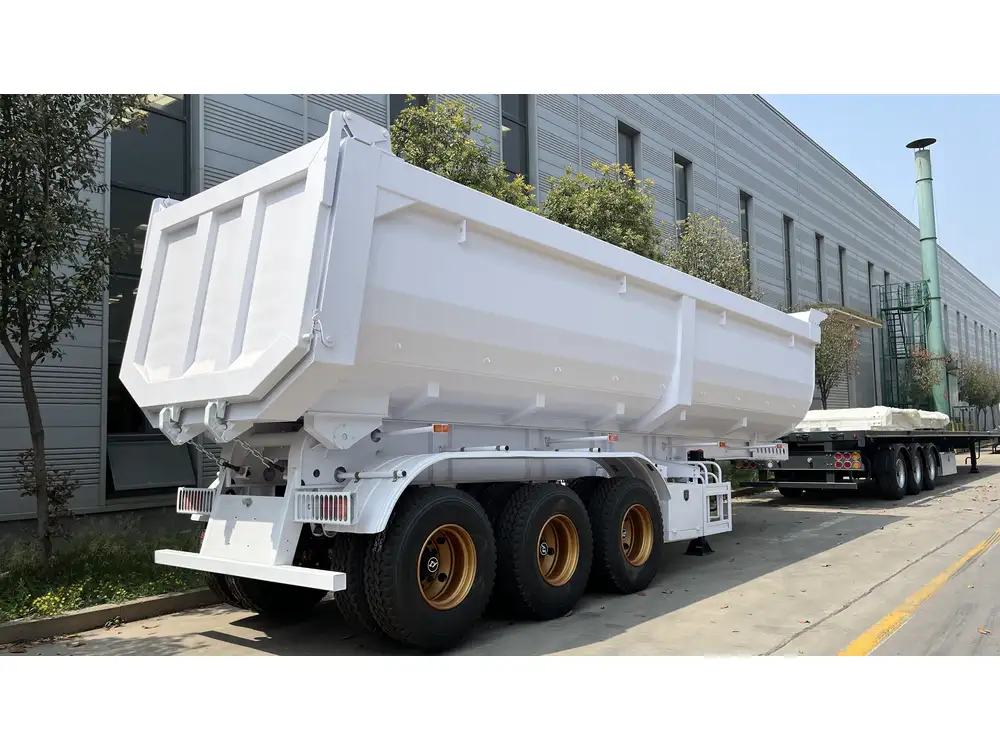Introduction
In the intricate world of freight transport, semi-trailers play a pivotal role in the efficient shipment of goods. One of the critical attributes affecting their operation is their width. Understanding the maximum width of a semi-trailer doesn’t just cater to compliance with regulations; it also influences maneuverability, loading efficiency, and safety on the road. In this article, we delve deep into the parameters governing the maximum width of semi-trailers, exploring state regulations, the implications of oversize loads, and how these dimensions affect your operations.
What Defines the Maximum Width of a Semi-Trailer?

Regulatory Standards
The maximum width for a semi-trailer is primarily dictated by federal and state regulations. In the United States, the Federal Highway Administration (FHWA) stipulates that:
- General Maximum Width: The maximum allowable width for a semi-trailer is 102 inches (8.5 feet). This standard applies uniformly across most states to facilitate interstate commerce.
Variances by State
While federal regulations outline a baseline, state laws may impose additional limitations or variations. Below is a comparative table illustrating maximum widths across various states.
| State | Maximum Width (inches) | Notes |
|---|---|---|
| California | 102 | Consistent with federal law |
| Texas | 102 | Oversized permits available |
| Florida | 102 | Specific routes may vary |
| New York | 102 | Must comply with bridge laws |
| Alaska | 96 | Unique conditions due to terrain |
| Hawaii | 102 | Limited by limited mobility |
It is crucial to check both federal and specific state regulations when planning any transportation operations.
Implications of Width Restrictions
Transporting goods on a semi-trailer isn’t just about fitting the maximum dimensions; width restrictions have several implications that affect logistics managers, drivers, and operators alike.

1. Maneuverability
Wider trailers can pose challenges, particularly in urban environments or on narrow roads. Increased width may lead to:
- Turning Radius: Wider dimensional loads require a larger turning radius, affecting navigation through tight spots.
- Heightened Risk: Wider loads can lead to a higher likelihood of accidents if drivers are not adequately trained to handle such dimensions.
2. Permitting for Oversized Loads
When exceeding the standard width, a semi-trailer is classified as an oversized load, necessitating special permits and compliance with specific conditions. This can include:
- Route Restrictions: Certain bridges, tunnels, and roads may not be suitable for oversized trailers.
- Escort Vehicles: Often, these loads must be accompanied by pilot cars to ensure safe navigation.
3. Safety Considerations
Oversized loads pose specific safety challenges such as:
- Increased Stopping Distance: Heavier and wider trailers require longer distances to stop, which can lead to dangerous situations on the roads.
- Visibility: Wider trailers can create blind spots, increasing the risk of accidents.

Key Considerations When Choosing Semi-Trailer Width
When selecting a semi-trailer for specific freight needs, various factors must be considered apart from state regulations:
1. Type of Cargo
The nature of the cargo can dictate width. For instance:
- Standard Pallet Loads: Primarily require a semi-trailer width of 102 inches.
- Specialized Loads: Equipment or cargo that is unusually shaped may require specialized trailers, possibly exceeding general width restrictions.
2. Loading and Unloading Facilities
Some businesses may have restricted loading and unloading zones that make wider trailers impractical. Considerations include:
- Dock Sizes: Ensure that loading docks can accommodate wider trailers without risking damage.
- Access Roads: Verify that roads leading to and from loading areas support oversized vehicles.

3. Fuel Efficiency
Wider trailers can sometimes lead to increased aerodynamic drag, impacting fuel consumption. When assessing fuel efficiency, consider:
| Width | Average MPG | Impact on Fuel Costs |
|---|---|---|
| 80 inches | 8-10 MPG | Lower fuel costs |
| 102 inches | 6-8 MPG | Higher fuel costs |
4. Compliance Costs and Fees
Regulatory compliance costs can vary significantly:
- Permitting Fees: Exceeding width limitations often incurs higher fees for permits.
- Insurance Premiums: Broader trailers may result in elevated insurance costs due to the increased risk profile.
The Balance of Efficiency and Compliance
Navigating the link between semi-trailer width, compliance, and operational efficiency is crucial for businesses.

Strategies for Achieving Balance
- Regular Training: Equip drivers with the skills necessary to handle wider loads safely.
- Optimization of Load Plans: Assess load efficiencies to avoid exceeding dimensions unnecessarily.
- Choose the Right Trailer: Selecting a trailer optimized for your specific operational needs can prevent unnecessary regulatory headaches.
Innovations in Trailer Design
The trucking industry is evolving with innovations designed to maximize cargo space while staying within width regulations. Emerging technologies include:
- Expandable Trailers: Some manufacturers have developed telescoping trailers that can adjust their width, allowing for flexibility in loading and unloading.
- Aerodynamic Designs: Streamlined designs that minimize drag not only improve fuel efficiency but may allow for increased cargo capacity within legal limits.
Conclusion
Understanding the maximum width of a semi-trailer is a multifaceted endeavor that encompasses regulatory compliance, safety considerations, and operational efficiency. By thoroughly grasping the implications of width restrictions, companies can optimize their logistics strategies, ensuring safe and effective transport of goods while complying with the myriad rules governing the trucking industry.
By leveraging insights from regulatory frameworks and operational realities, businesses can strategically navigate the complexities of semi-trailer dimensions. Staying informed and proactive in understanding width regulations will enhance safety, reduce costs, and improve overall operational efficiency in the competitive landscape of freight transportation.
Engage with our resources for further assistance in selecting the right semi-trailer for your needs and ensure that you remain compliant with all applicable regulations.



